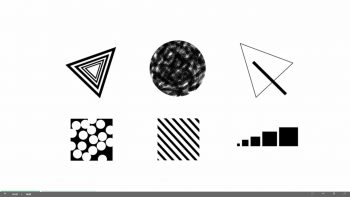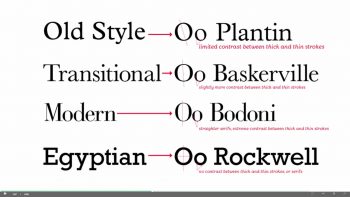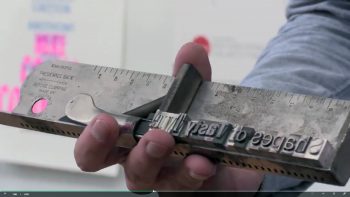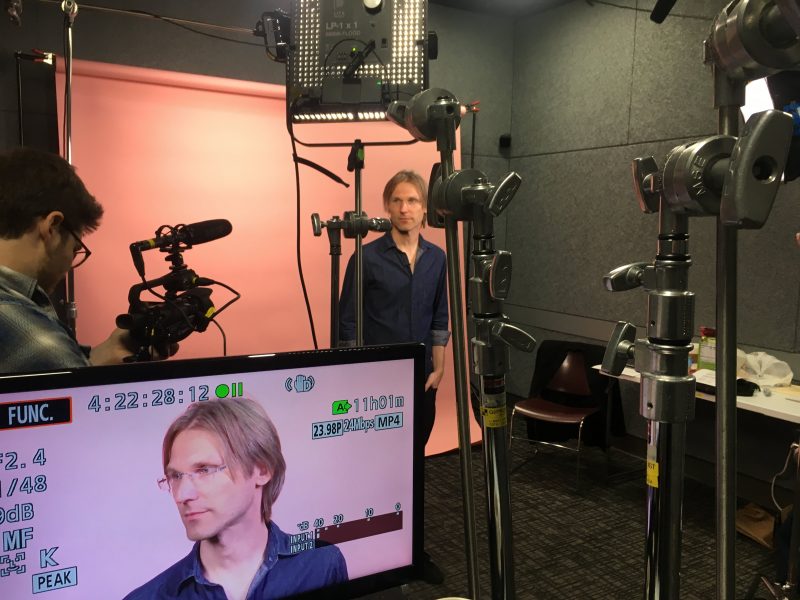The first segment of CalArts Specialization in Graphic Design MOOC launched on Coursera in October last year. Since then the Fundamentals course has been joined by Typography and Imagemaking courses, with Design History and a capstone project completing the cluster of courses in the coming Summer. As Michael Worthington explains, what seems antithetical to CalArts model of education may well turn out to be one of its best allies…
I have to admit I was entirely skeptical when it came to online education. I’d seen so many talking head videos, with bad production quality, populated by uncomfortable academics forced in front of the camera to explain things far more nervously than they would do in a classroom setting. But with education costs soaring I was intrigued with the idea that some beginning fundamentals could be taught more cheaply outside the classroom and online; and perhaps make space for more advanced education to take place at the high fees institute.
When I started my own creative career as a photographer, I learnt an incredible amount from one single encyclopedic photography book my sister bought me when I was 14. I learnt technical information, I learnt about photo history and contemporary photographers, and I developed interests and opinions based around this one book. In short it was a gateway to a whole new world, and eventually I went on to college to study photography: the book never replaced my in-person education, but it did encourage and introduce me to a creative world. With this in mind I began to see how a MOOC (Massive Open Online Course) could reach a huge audience worldwide and introduce them to the field of graphic design: not replace a school or college education, but rather act as a text book would, to act as an educational catalyst of sorts.
Graphic Design is a visual practice for people who learn visually. And, of course, you can do things onscreen you can’t do in a text book, your illustrations can move, your stories and pictures can unfold over time, you can show iterations, process, you can show how things are built step by step… So why not show design being made in order to teach designers how to make? With this simple premise in mind I got rid of the talking heads and instead treated my course like a living text book, or an educational documentary, using voiceover and moving, growing examples of design process.
As soon as I thought about my class in this context I realized that while there have been many great graphic design “how to” books over the last twenty years, they are nearly all terribly designed, even when they have amazing content they are horrible to look at. So I approached my Coursera class as a graphic designer would: I treated it like a design problem. With this in mind I loaded it with useful visual content to make it dense and rewatchable; I got rid of nearly all the talking heads and instead showed actual examples of design being made.
I mapped out my content and set about making graphics in InDesign so I could move them around and illustrate whatever I was talking about, and then record the screen with my voice on top. I quickly found out it was actually fun to make in this way, to perform (much as teaching is performing in front of a class) in a fluid, responsive way as opposed to reading a script.
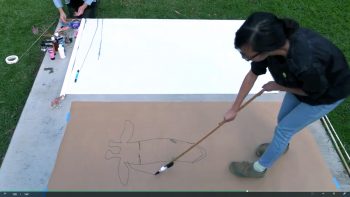
Imagemaking demo by alum Tiffany Tran, from Gail Swanlund’s course
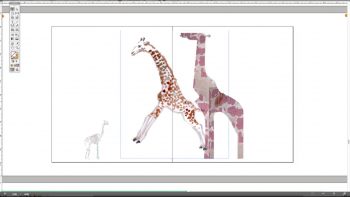
Screen grab from Gail Swanlund’s Imagemaking course
My class, Fundamentals of Graphic Design was launched on Coursera and offered for free. It stood alone with no support from a “live” teacher, in short it acted like a text book does. We ran the class with a live teacher for Digital Arts Minor students at CalArts, and we hope to make it free for all incoming students. At the one year mark I’m hoping the courses will have reached over 100,000 learners.
So while in many ways it is the opposite to a CalArts education (small classes, individualized education, and personal intimate critique) it does not compete with that in any way. What it does, is offer a chance to put CalArts’ design philosophy out into the world and also create something that is a precursor (a foundation) to a much more advanced and idiosyncratic in-person education. It won’t replace what we do in the design program at CalArts, but it will add to it.


